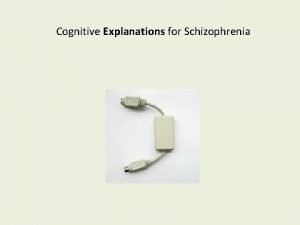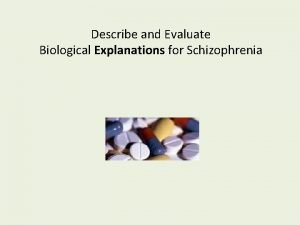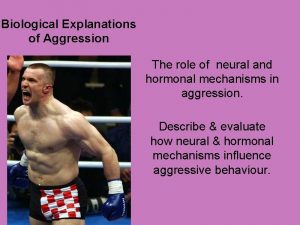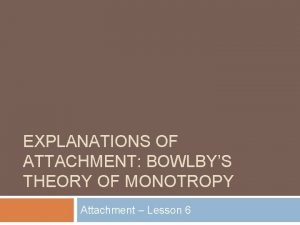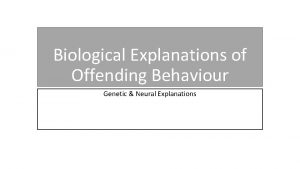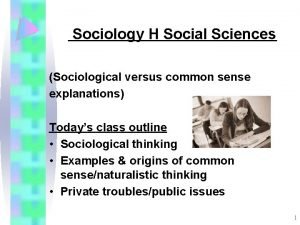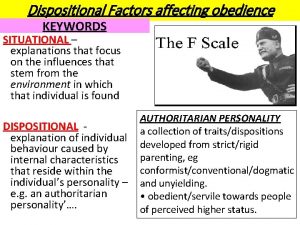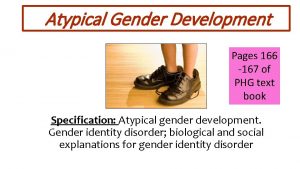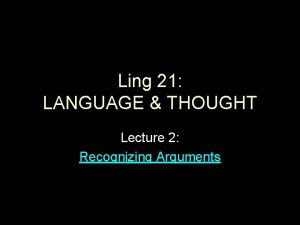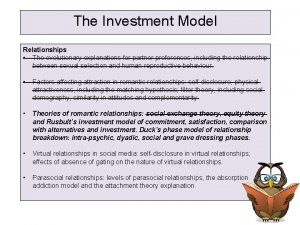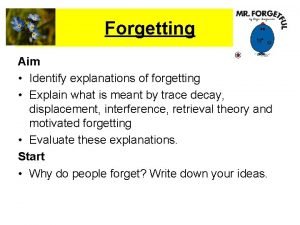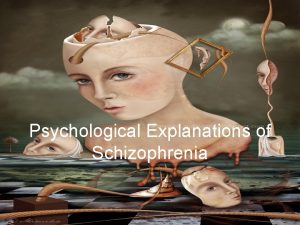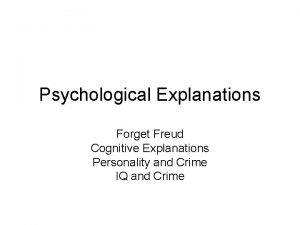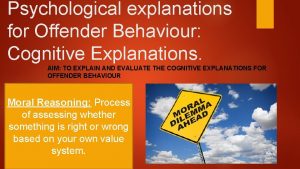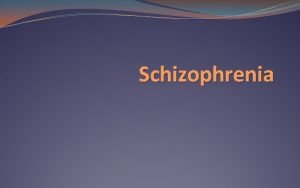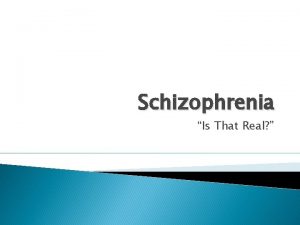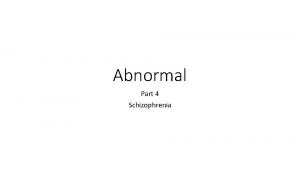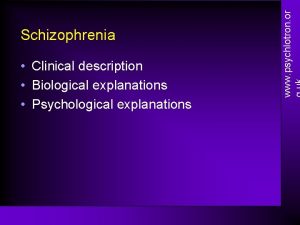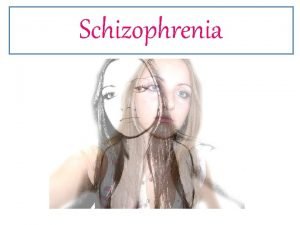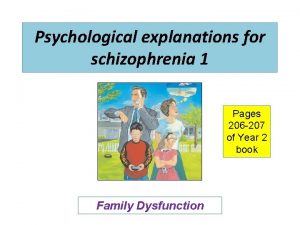Psychological explanations of schizophrenia COGNITIVE FAULTS So far




















- Slides: 20

Psychological explanations of schizophrenia COGNITIVE FAULTS

So far we have looked at… • What schizophrenia is • The issues with how it is diagnosed • Biological explanations • Biological treatments For the last part of the topic we will look at: • psychological explanations – cognitive faults and family issues • psychological treatments – CBT and family therapy

The cognitive explanation of schizophrenia • Similar to what we looked at in Unit 2 Abnormality • This explanation is saying that people with schizophrenia have cognitive faults – problems in their mental processing ability • They do not know which pieces of information to attend to and which are irrelevant • Split into two main theorists – Frith and Helmsley

Frith’s model • Frith (1992) argues that we usually filter information at a preconscious level and that only what is relevant reaches the conscious level (things that we are aware of) where it is processed. • In schizophrenics, positive symptoms arise as this filter is “faulty” and all information reaches the conscious level so irrelevant information is seen as relevant. • Individuals with schizophrenia may have problems with self-monitoring, and so fail to keep track of their own intentions. • As a result, they mistakenly regard their own thoughts as having come from someone else (thus explaining auditory hallucinations). • Similarly, they may attribute some of their thoughts or movements to others, explaining symptoms such as delusions of control. • He believes this ‘faulty filter’ is caused by abnormalities in the pathway connecting the hippocampus to the prefrontal cortex.

Hemsley’s model • Helmsley (1993) suggests there is a large breakdown in the relationship between memory and perception (how they interpret things) in schizophrenics. • In non-schizophrenics, individuals give meaning to new sensory input by using previously stored knowledge (schemas). • However, people with schizophrenia are often unable to activate schemas, which would allow them to predict what will happen next. • Their concentration is therefore poor, and they attend to unimportant or irrelevant aspects of the environment. • Their poor link between memory and perception leads to disorganised thinking and behaviour. • Helmsley believes these deficits can be attributed to abnormalities in the hippocampus.

Evidence to support the cognitive model… • Liddle and Morris (1991) They had schizophrenic and non-schizophrenic patients carry out the Stroop test

Say the colour of the ink the word is written in Start

Red

Blue

Green

Purple

Orange

Yellow

Brown

Grey

Black

The results… • Who do you think would have done worse on the Stroop test? • Why? Schizophrenics performed poorly as they had trouble deciding which information was relevant and which they should attend to. They were more likely to say the actual word rather than what colour the word was in.

Further evidence to support… • Mc. Guigan (1966) found that the larynx (the voice box – controls speech) of patients with schizophrenia was often active (being used) during the time they claimed to be experiencing auditory hallucinations. • This suggests that… They thought their own voice was someone else’s – supports the idea they have issues in self-monitoring

Evaluating the cognitive explanation • Less reductionist – does it ignore other factors involved in schizophrenia? Does it combine with any other approaches? • Successful treatment – what treatments has stemmed from this explanation? • Problems with causality – are faulty mental processes the cause or consequence of schizophrenia • Doesn’t explain abusive hallucinations/delusions – often schizophrenics have people telling them to harm others – why? • Doesn’t explain negative symptoms – such as…. What are the only symptoms it seems to focus on?

Extension task • Complete the questions to demonstrate your understanding of the Cognitive explanation of schizophrenia
 Cognitive explanations of schizophrenia
Cognitive explanations of schizophrenia Biological explanations of schizophrenia
Biological explanations of schizophrenia Double bind
Double bind Sour cream walls is an example of pun
Sour cream walls is an example of pun In a kingdom far far away
In a kingdom far far away Far far away city
Far far away city For lives that slyly turn
For lives that slyly turn Cognitive and non cognitive religious language
Cognitive and non cognitive religious language Russian
Russian Biological explanations of aggression
Biological explanations of aggression Bowlbys monotropic theory
Bowlbys monotropic theory Neural explanations of offending behaviour
Neural explanations of offending behaviour Examples of common sense and sociological explanations
Examples of common sense and sociological explanations Outline two explanations for obedience
Outline two explanations for obedience Gender dysphoria biological explanations
Gender dysphoria biological explanations Arguments and explanations
Arguments and explanations Dust bowl migration map
Dust bowl migration map Evolutionary explanations for partner preferences
Evolutionary explanations for partner preferences Motivational forgetting
Motivational forgetting Evaluate the atavistic form explanation for offending
Evaluate the atavistic form explanation for offending Picking faults
Picking faults
